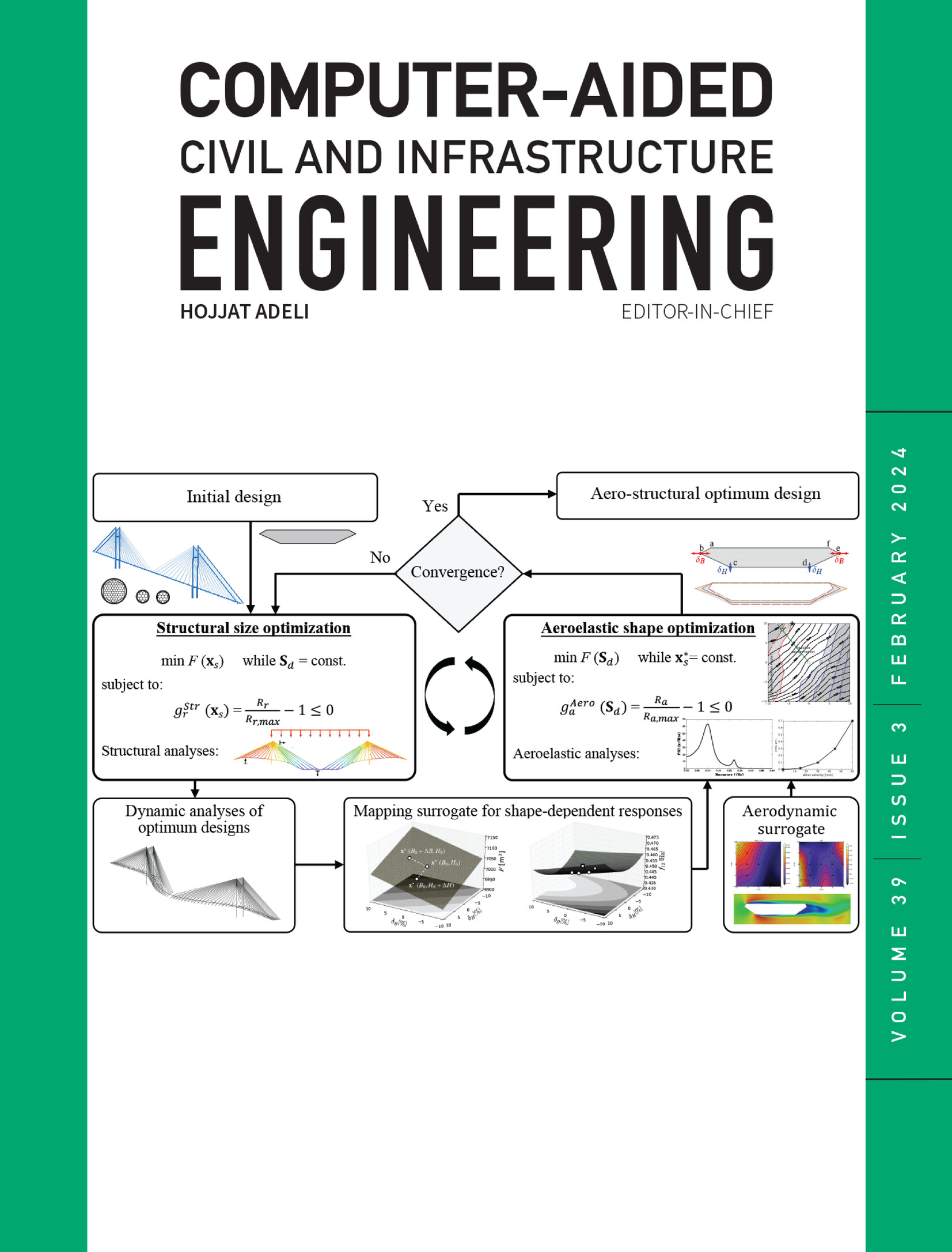Multifidelity graph neural networks for efficient and accurate mesh‐based partial differential equations surrogate modeling
IF 8.5
1区 工程技术
Q1 COMPUTER SCIENCE, INTERDISCIPLINARY APPLICATIONS
引用次数: 0
Abstract
Accurately predicting the dynamics of complex systems governed by partial differential equations (PDEs) is crucial in various applications. Traditional numerical methods such as finite element methods (FEMs) offer precision but are resource‐intensive, particularly at high mesh resolutions. Machine learning–based surrogate models, including graph neural networks (GNNs), present viable alternatives by reducing computation times. However, their accuracy is significantly contingent on the availability of substantial high‐fidelity training data. This paper presents innovative multifidelity GNN (MFGNN) frameworks that efficiently combine low‐fidelity and high‐fidelity data to train more accurate surrogate models for mesh‐based PDE simulations, while reducing training computational cost. The proposed methods capitalize on the strengths of GNNs to manage complex geometries across different fidelity levels. Incorporating a hierarchical learning strategy and curriculum learning techniques, the proposed models significantly reduce computational demands and improve the robustness and generalizability of the results. Extensive validations across various simulation tasks show that the MFGNN frameworks surpass traditional single‐fidelity GNN models. The proposed approaches, hence, provide a scalable and practical solution for conducting detailed computational analyses where traditional high‐fidelity simulations are time‐consuming.多保真度图神经网络用于高效、精确的基于网格的偏微分方程代理建模
准确预测由偏微分方程(PDE)控制的复杂系统的动力学特性在各种应用中至关重要。有限元法(FEM)等传统数值方法精度高,但资源密集,尤其是在高网格分辨率下。基于机器学习的代用模型,包括图神经网络(GNN),通过减少计算时间提供了可行的替代方法。然而,它们的准确性在很大程度上取决于大量高保真训练数据的可用性。本文提出了创新的多保真度 GNN(MFGNN)框架,可有效结合低保真度和高保真度数据,为基于网格的 PDE 仿真训练更精确的代理模型,同时降低训练计算成本。所提出的方法利用了 GNN 的优势来管理不同保真度级别的复杂几何图形。结合分层学习策略和课程学习技术,所提出的模型大大降低了计算需求,提高了结果的鲁棒性和通用性。各种仿真任务的广泛验证表明,MFGNN 框架超越了传统的单一保真度 GNN 模型。因此,在传统高保真模拟耗时的情况下,所提出的方法为进行详细的计算分析提供了可扩展的实用解决方案。
本文章由计算机程序翻译,如有差异,请以英文原文为准。
求助全文
约1分钟内获得全文
求助全文
来源期刊
CiteScore
17.60
自引率
19.80%
发文量
146
审稿时长
1 months
期刊介绍:
Computer-Aided Civil and Infrastructure Engineering stands as a scholarly, peer-reviewed archival journal, serving as a vital link between advancements in computer technology and civil and infrastructure engineering. The journal serves as a distinctive platform for the publication of original articles, spotlighting novel computational techniques and inventive applications of computers. Specifically, it concentrates on recent progress in computer and information technologies, fostering the development and application of emerging computing paradigms.
Encompassing a broad scope, the journal addresses bridge, construction, environmental, highway, geotechnical, structural, transportation, and water resources engineering. It extends its reach to the management of infrastructure systems, covering domains such as highways, bridges, pavements, airports, and utilities. The journal delves into areas like artificial intelligence, cognitive modeling, concurrent engineering, database management, distributed computing, evolutionary computing, fuzzy logic, genetic algorithms, geometric modeling, internet-based technologies, knowledge discovery and engineering, machine learning, mobile computing, multimedia technologies, networking, neural network computing, optimization and search, parallel processing, robotics, smart structures, software engineering, virtual reality, and visualization techniques.

 求助内容:
求助内容: 应助结果提醒方式:
应助结果提醒方式:


